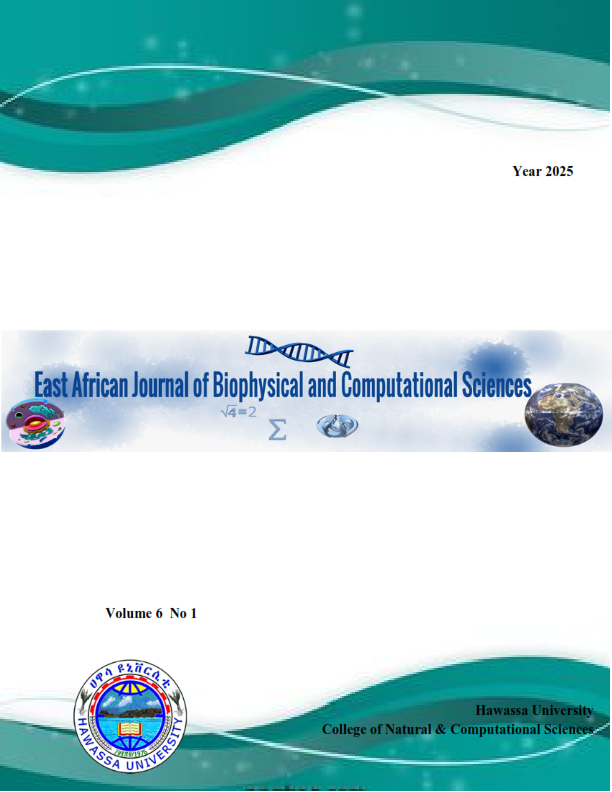The Effect of CuO Nanoparticle Variation on the Green Synthesized ZnO/CuO Nanocomposites for Antibacterial Activities
DOI:
https://doi.org/10.20372/s4d47625Abstract
Plant extracts play critical role in synthesizing nanomaterials for a wide range of applications in human health and managing environmental pollutions. The present work focuses on varying CuO NP’s concentration in ZnO/CuO nanocomposites (NC) synthesized with orange peel extracts (ZnO/CuO WE NC) for its antibacterial activities. The concentration of CuO with respect to ZnO NP fixed as 10:10, 10:20, 10:30, and 10:40 of CuO:ZnO. The as-synthesized NC was characterized using UV-Vis, FTIR, XRD, and SEM spectroscopes. Accordingly, the UV-Vis result reveals that the absorption spectra range from 312-328 nm confirming that the incorporation of orange peel extract provides strong absorption peaks along with the increasing concentration of CuO in the composite while it provides narrow energy band gap of ZnO/CuO WE NC from 3.97 to 3.78 eV. FTIR analysis revealed that the stretching vibration of Zn-O and Cu-O are observed around 480 cm-1 and 600 cm-1, respectively for all ratios of WE NC. XRD indicated that the formation of hexagonal wurtzite structure and the crystallite size ranges from 24.12 to 3.17 nm. The SEM image showed the morphology of 10:20, 10:30, and 10:40 are aggregated, smooth, polished, and smaller in size compared to 10:10 ZnO/CuO WE NC, which is a cluster and flake-like structure. The antibacterial activities of 10:10, 10:20, 10:30, and 10:40 ZnO/CuO WE NC were evaluated against two bacterial strains. Remarkably, 10:40 ZnO/CuO WE NC provided strong antibacterial action against P. aeruginosa. Thus, the as-synthesized 10:40 ZnO/CuO WE NC is so profound to combat bacterial infectious diseases.
Downloads
Published
Issue
Section
License
Copyright (c) 2025 Hawassa University, CNCS

This work is licensed under a Creative Commons Attribution-NonCommercial-NoDerivatives 4.0 International License.

